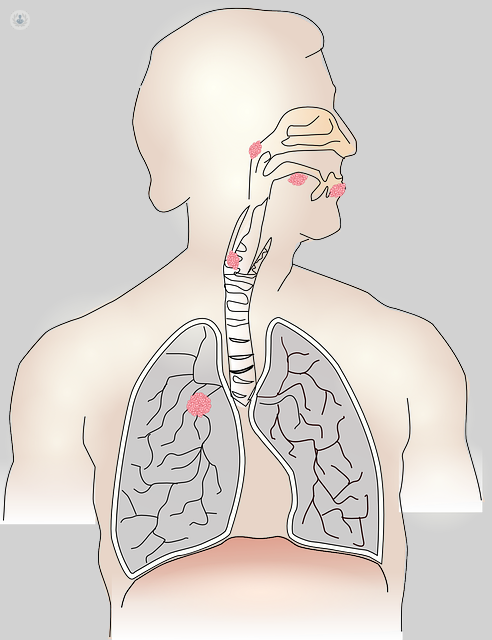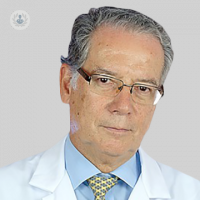Causes and treatment of lung cancer
Written by:Lung cancer is the leading cause of death carcinogenic worldwide. A year there are about 1,400,000 new cases; all there, about 85% are related to snuff.
Causes Lung Cancer
 Explain the experts in thoracic surgery that lung cancer occurs when cells are exposed to prolonged factors harmful to the body.
Explain the experts in thoracic surgery that lung cancer occurs when cells are exposed to prolonged factors harmful to the body.
The main factors that are related to the development of lung cancer are:
- The snuff. Smokers are 10 to 20 times greater risk of developing lung cancer, smoking also snuff light. Passive smokers are also at risk of developing the disease. People who quit smoking at least need 15 years to approach the same risk of passive smoking for lung cancer. All statistics are dependent on each person who smokes cigars. Up to 15% of patients with lung cancer have never smoked.
- Occupations. Workers in contact with asbestos, oil and oil products. It has also been associated with exposure to nickel, radon, arsenic, chromates and the chloromethyl ethers.
- Age. The risk of lung cancer increases with age, with the highest incidence between 60 and 70 years.
- Genetic factors. The risk is multiplied by 4 when there is a family history of the disease.
- Sex. The men have a rate three times higher than women. The reason is that they smoke more than they, although women have increased their consumption in recent years.
- Benign diseases. COPD patients are at increased risk of developing lung cancer. The disease has also been associated with idiopathic pulmonary fibrosis, scleroderma and scars of old lung diseases, such as tuberculosis.
Treatment and Symptoms of Lung Cancer
Surgery is the first treatment that is valued in lung cancer, since it is the most effective, if only it is done in the initial stages and in some advanced. When the cancer is advanced surgery is sometimes viewed with radiotherapy and / or chemotherapy.
To find out what stage of the disease, a study was done to the patient based on a CT (computed tomography) and PET (positron emission tomography).



